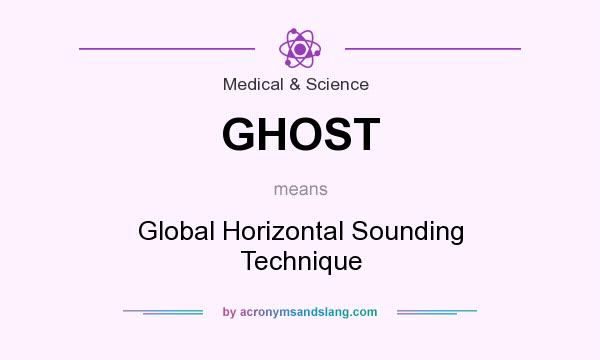What does GHOST mean?
GHOST means Global Horizontal Sounding Technique
This acronym/slang usually belongs to Medical & Science category.
What is the abbreviation for Global Horizontal Sounding Technique?
Global Horizontal Sounding Technique can be abbreviated as GHOST

|
|
Most popular questions people look for before coming to this page
| Q: A: |
What does GHOST stand for? GHOST stands for "Global Horizontal Sounding Technique". |
| Q: A: |
How to abbreviate "Global Horizontal Sounding Technique"? "Global Horizontal Sounding Technique" can be abbreviated as GHOST. |
| Q: A: |
What is the meaning of GHOST abbreviation? The meaning of GHOST abbreviation is "Global Horizontal Sounding Technique". |
| Q: A: |
What is GHOST abbreviation? One of the definitions of GHOST is "Global Horizontal Sounding Technique". |
| Q: A: |
What does GHOST mean? GHOST as abbreviation means "Global Horizontal Sounding Technique". |
| Q: A: |
What is shorthand of Global Horizontal Sounding Technique? The most common shorthand of "Global Horizontal Sounding Technique" is GHOST. |
Abbreviations or Slang with similar meaning
- HH - Horizontal Transmit, Horizontal Receive
- HH - Horizontal, Horizontal Polarization
- HTHL - Horizontal Takeoff Horizontal Landing
- SABER - Sounding of the Atmosphere using Broadband Emission Radiometers
- SABER - Sounding of the Atmosphere Using Broadband Emission Radiometry
- SRPO - Sounding Rocket Program Office
- SOLO - Sounding Oceanographic Lagrangian Observer
- SRPH - Sounding Rocket Program Handbook
- SRS - Sounding Reference Signal
- STST - Sounding the Seventh Trumpet
- STORM - Sounding and Tracking Observatory for Regional Meteorology
- GHI - Global Horizontal Irradiance
- HHB - Horizontal Horizontal Branch
- HTOHL - Horizontal Takeoff and Horizontal Landing
- SBCC - Sounding Board Counseling Center
- HSB - Horizontal Sounding Balloon
- HTHL - Horizontal Take-off Horizontal Landing
- HTOHL - Horizontal Take Off Horizontal Landing
- hh - Horizontal, Horizontal
- TAPES - Technique And Practice (or Pressure) Equals Skill. Technique alone is not enough. Application of a new technique in a practice or pressure situation is required to turn the technique into a skill and then improve it.